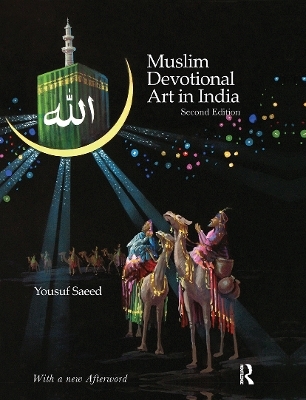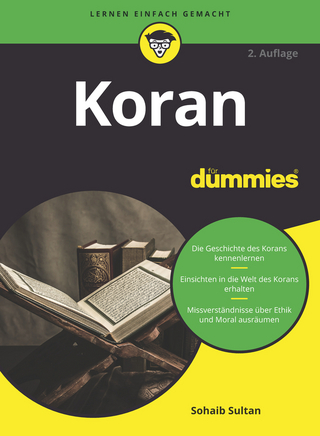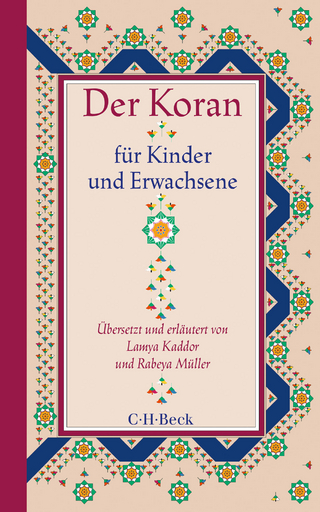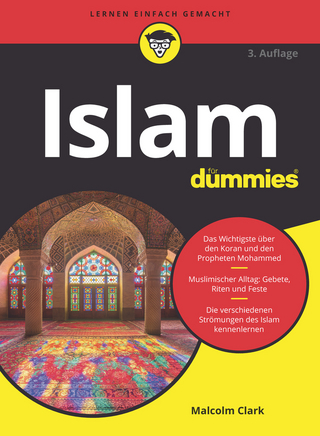
Muslim Devotional Art in India
Routledge India (Verlag)
978-0-367-73290-5 (ISBN)
This book highlights the history of Islamic popular devotional art and visual culture in 20th-century India, weaving the personal narrative of the author’s journey through his understanding of the faith. It begins with an introductory exploration of how the basic and universal image of Mecca and Medina may have been imported into Indian popular print culture and what variants it resulted in here. Besides providing a historical context of the pre-print culture of popular Muslim visuality, the book also explores the impact the 1947 Partition of India may have made on the calendar art in South Asia. A significant portion of the book focuses on the contemporary prints of different localised images found in India and what role these play in the users’ lives, especially in the augmentation of their popular faith and cultural practices. The volume also compares the images published in India with some of those available in Pakistan to reflect different socio-political trajectories. Finally, it discusses why such a vibrant visual culture continues to thrive among South Asian Muslims despite the questions raised by the orthodoxy on its legitimacy in Islam, and why images and popular visual cultures are inevitable for popular piety despite the orthodox Muslims’ increasing dissociation from them.
This work is one of the first books on Indian Muslim poster art, with rare images and simple narratives, anecdotes about rituals, ceremonies and cultural traditions running parallel to research findings. This second edition contains a new Afterword that discusses challenges to religious plurality arising on account of changing political landscapes, economic liberalisation, technology and new media, and socio-religious developments. It will appeal to the lay reader as well as the specialist and will be especially useful to researchers and scholars in popular culture, media and cultural studies, visual art and performance studies, and sociology and social anthropology.
Yousuf Saeed is an independent filmmaker and researcher, and project director of Tasveer Ghar, a digital archive of South Asian popular visual culture. Starting his career in educational television in 1990 by co-directing Turning Point, a science-based TV series for Doordarshan, India’s public broadcaster, he moved on to directing documentary films on a variety of subjects, such as Ladakh, Sufi heritage, and India’s syncretic cultural traditions. His documentary films Basant, The Train to Heaven, Khayal Darpan, Khusrau Darya Prem Ka, and Campus Rising have been shown at numerous national and international film festivals as well as on TV channels. He has worked at the Encyclopaedia Britannica (India) as image editor on many of its India-specific publications. He has also been a Sarai Fellow (at the Centre for the Study of Developing Societies, New Delhi, 2004), an Asia Fellow (at the Asian Scholarship Foundation, Bangkok, 2005) and a Margaret Beveridge Senior Research Fellow (at Jamia Millia Islamia, New Delhi, 2009) for various research-based projects on media and popular art. He has made lecturing tours in Europe and America, where he has shown his films as well as images from his extensive collection of popular Muslim devotional art. He also co-edited Visual Homes, Image Worlds: Essays from Tasveer Ghar (2015) besides contributing to several recent publications.
Introduction: The Duller the Better 1. The Image of Mecca in India 2. The Popular Culture of Indian Muslims Before Print 3. Heroes, Portraits and Miraculous Powers 4. Images of Use and the Use of Images 5. Images of the Two Nations 6. Postscript: Why Do Popular Images Thrive in the Muslim World Despite…? Afterword to the Second Edition: Challenges to Religious Plurality
| Erscheinungsdatum | 16.01.2021 |
|---|---|
| Verlagsort | London |
| Sprache | englisch |
| Maße | 189 x 246 mm |
| Gewicht | 467 g |
| Themenwelt | Kunst / Musik / Theater |
| Geisteswissenschaften ► Religion / Theologie ► Islam | |
| Sozialwissenschaften | |
| ISBN-10 | 0-367-73290-4 / 0367732904 |
| ISBN-13 | 978-0-367-73290-5 / 9780367732905 |
| Zustand | Neuware |
| Haben Sie eine Frage zum Produkt? |
aus dem Bereich


